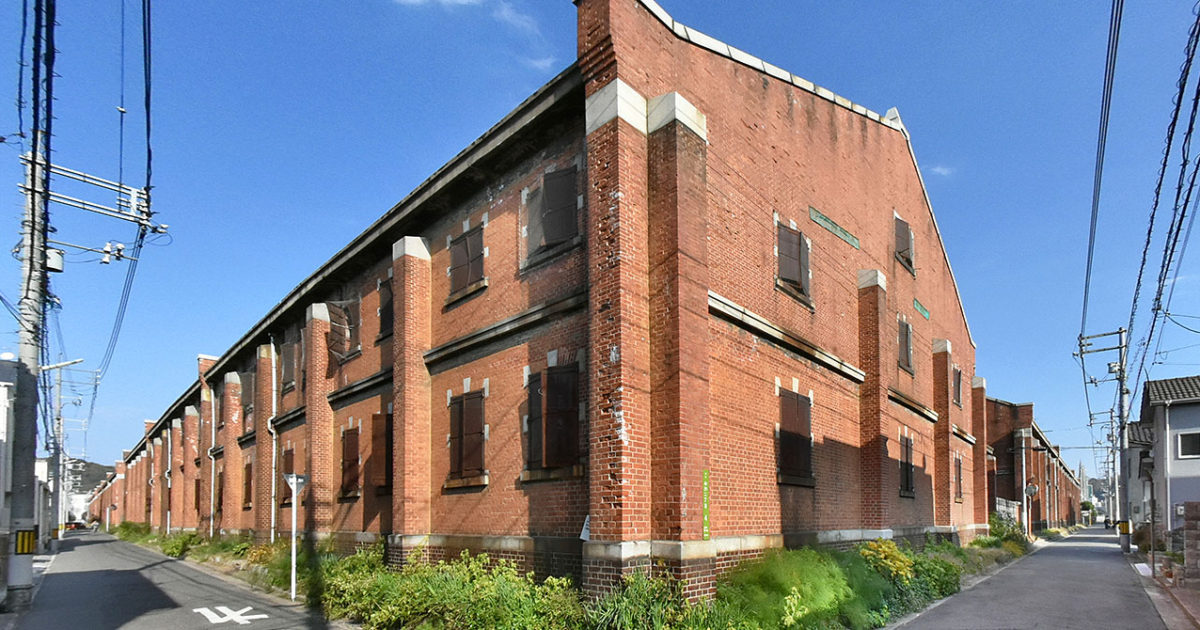TAKATA Makoto , the chairperson of AWH
The warehouses are in a residential area. When you visit the site, please do not block the street, and please be quiet.
History of the Former Hiroshima Army Clothing Depot

The modernization of Hiroshima began with the construction of a modern seaport in the late 19th century. Following the outbreak of the Sino-Japanese War in 1894, the port was used by the army, and numerous military facilities were built in Hiroshima. The military industry was a key factor in the city’s growth. The four buildings described in this booklet were built in 1913 as warehouses for a factory that manufactured army uniforms.
These warehouses withstood the atomic bombing of 1945 although they were damaged by the intense heat and blast. Shortly after the bombing, many injured people were brought here, and many of them died.
After the war, the warehouses were used for high school buildings and then as warehouses for a private company. Today they are left unused.
Progress in Ferroconcrete Construction

These warehouses were among the earliest ferroconcrete buildings in Japan. The world’s first ferroconcrete apartment building was built in France in 1903. Ferroconcrete buildings, or reinforced concrete buildings, became common in Japan after many brick buildings were destroyed in the Great Kanto Earthquake of 1923. In 1913, when these warehouses were built, ferroconcrete technology had not been fully developed, and engineers were learning through trial and error. These warehouses reflect that transition period and are important for understanding the history of architectural technology.
Traditional and Modern Features
The warehouses have both traditional and modern architectural features. While employing the style of the brick buildings developed in Europe for the exterior, modern ferroconcrete technology was used for the interior, including the floors and pillars, which would ordinarily have been made of wood or iron. That is to say, the traditional brick technology was employed for the exterior while the latest ferroconcrete technology was used for the interior. This combination of old and new is rare.
The design of the buildings is simple but with some decorative details. These features give the buildings both a “retro” and a modern feel.
A Place to Sense History

People learn about history not only from books and museums but also by visiting historic sites. Seeing those sites and feeling the atmosphere there help people gain a true understanding of history. Many buildings that symbolized the modernization of Hiroshima were destroyed in the war and in the course of urban development. These large-scale warehouses are among the few remaining buildings that allow people to learn firsthand about the modern history of Hiroshima.
Visiting the A-bomb Dome is not enough to gain a deep insight into Hiroshima. With their long brick walls and their iron shutters bent by the atomic bomb, these warehouses are also worth a visit.
Present Circumstances

Hiroshima Prefecture owns three of the four warehouses; the national government owns the other one. The buildings have not been used since they were closed in the 1990s. As they are not earthquake-resistant, the buildings are unsafe, and a seismic retrofit would be costly. So, in December 2019, Hiroshima Prefecture announced a plan to dismantle two of the buildings. The mayor of Hiroshima and many citizens opposed this plan, saying that these are important buildings which survived the atomic bombing and that they must not be destroyed without due considerations. As of June 2020, no concrete plan has been formulated.
In Japan, many people tend to regard historic buildings as old and worthless. In Hiroshima, many buildings that survived the atomic bombing have been torn down for financial reasons. The dispute over these warehouses will have a major impact on Hiroshima.
Request to Visitors
The former Hiroshima Army Clothing Depot is not open to the public except for special occasions. The exterior can be viewed from the street, but please refrain from disturbing local residents by talking loudly or parking on the street. When taking photographs of the buildings, please respect local residents’ privacy.
Access
2-4 Deshio, Minami-Ku Hiroshima City, Japan [map]

